Yes, this is a serious Blog Rant! Yes – we’ll have some fun with it too. Why not? Isn’t that what this is all about?!
No… the title doesn’t mean “go watch porn.” You be you, of course, but it’s in the sense of anything that we obsess about on the internet these days and watch a lot of YouTube, Vimeo, Insta, etc about it. In this case, it’s just wrist watches. I’ve developed a minor obsession with them of late.
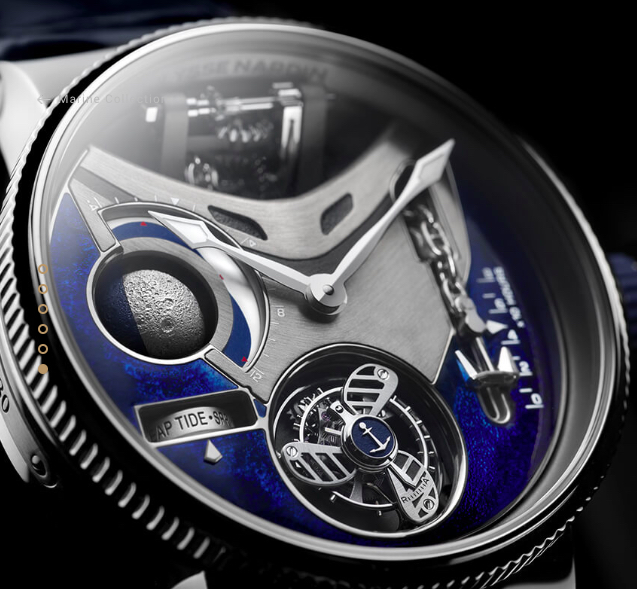
Not sure how it started. Must have seen an Insta ad that grabbed me by the second hand. I do recall that soon after college, during my first job (office, not ‘Below Deck’), I started to like watches. I figured that if I ever made it rich, I’d have a serious watch collection. I was really intrigued by the Movado Museum watch (which, of course, is still going strong with umpteen variations on the original theme).
Never did start that watch collection. Never too late, of course. Have to start somewhere; tried out a few but starting to realize how complicated it is. You know.. complications. Moonphase; chronometer; day/date; GMT; heartbeat/skeleton… etc, etc. So many complications. (In case you didn’t know, that’s the horological term for a feature or function.)
So, what’s the big deal with watches and telling time at sea? Where’s the porn I promised? (It’s coming, it’s coming…)
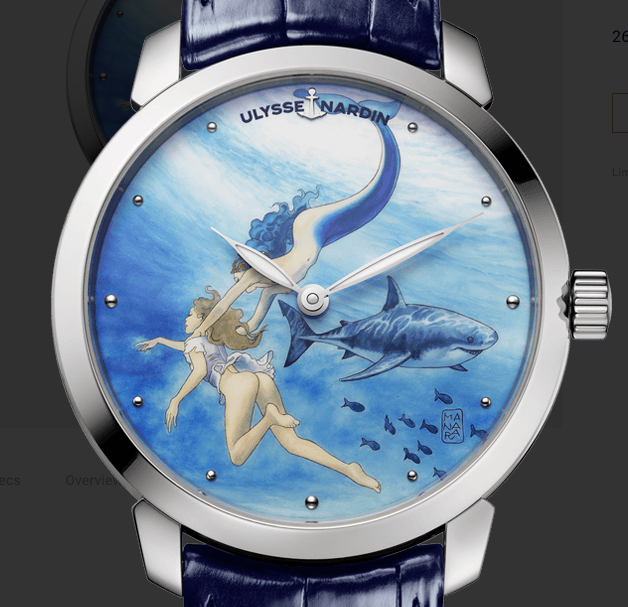
The big deal is… LONGITUDE.
Latitude and Longitude have two meanings related to this topic and the Sailing Center:
- Latitude/Longitude was a fragrance from Nautica. They hired us to re-create realistic lat/lon coordinates from a film shoot of a TV spot. They filmed near Cabo San Lucas. Based on the time of day they sailed, the angles of the sun, etc, etc, we came up with some coordinates they could add as a screen graphic that were in the area. We didn’t represent them as the coordinates of the vessel as depicted in the shot. (They sort of did.) We told them that anyone trying to find fault wouldn’t be able to. Still have the charts lying around somewhere – Defense Mapping Agency renditions at both harbor and general scales.
- Much more importantly, latitude and longitude form the man-made position grid that is used for navigation worldwide. It’s what GPS was built on.
What’s the relationship of watches and horology to longitude? Both latitude and longitude are position references, but they each have another property that’s mutually exclusive. For latitude, it’s distance. The parallels are equidistant. For longitude, yes- you guessed it… TIME.
Centuries ago, the concepts were well developed and understood. Ashore, it was easy enough to measure both and determine a reasonably accurate position. But at sea, while measuring latitude was annoyingly doable, it was just impossible with longitude. Why? There wasn’t a device that could keep accurate time over the course of, well…. time. Time on the ocean. The longer a voyage, and the rougher it was, the worse that got. When temperature and atmospheric pressure changed, so did the functioning of timepieces. The existing methods were difficult or impossible to use over the course of an extended sea voyage, or during certain moon phases. Add bad weather, and, well… you were aground or lost.
“She wast lost, but then was found…”

One particularly disastrous sea voyage pissed off the British Crown to the point of offering a prize for solving the problem. In 1707, a naval fleet foundered on bad shoals off the Scilly Isles, losing four ships and almost two thousand men. A simple sailor tried to warn of the impending danger, as he’d kept his own careful deduced reckoning and was certain they were about to run afoul of the treacherous area. He was summarily executed for his trouble, as he would well have known was a risk at the time. Imagine what went through Admiral Sir Clowdesley Shovell’s mind (1; whew! 2. Origin of “shoveling shit?”). The guy he just hanged was right. Too late… Karma is tough. The Admiral was one of only two seamen to make it to shore. He was murdered for his emerald bling; the woman who did it confessed on her deathbed in a last minute act of contrition long afterward. Can’t make this shit up!
So, who solved this less than delicate debacle? Many people took stabs at it over many decades. Some tried to use celestial methods to determine longitude while at sea; others tried to make timepieces that remained accurate on ocean voyages. That’s what ultimately worked. Simple concept; hard to make. The chronometer was conceived long before it was built, and the name was first coined in 1714 by someone who hadn’t made an effective one. But it was eventually made, and further refined by himself and others who followed in his footsteps. And it was made by…
One John Harrison, an English carpenter and clock maker. And it took much of his life.
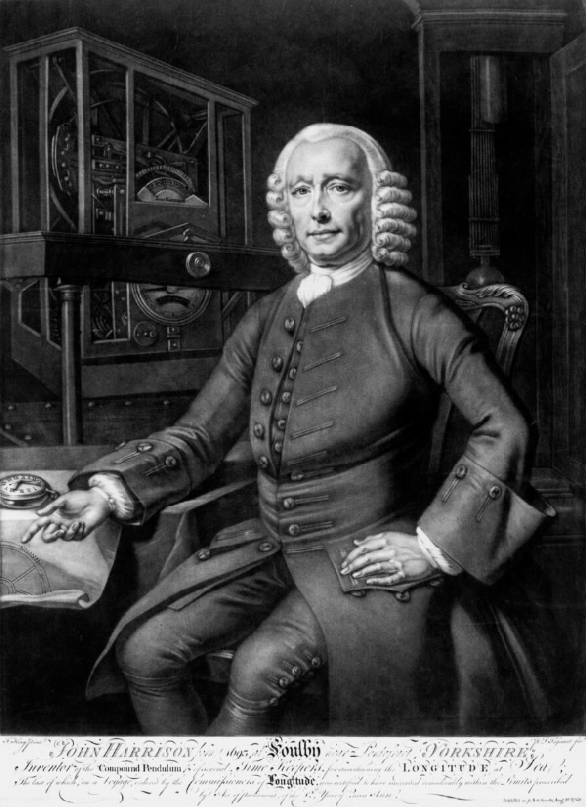
Ever heard of him? Probably not. Heard of Galileo? Sure you have! He was just one of many minds who tried to solve the issue of determining longitude at sea by lunar methods, or tracking the moon’s movements in relation to stars and the sun.
Harrison? He made a watch that could accurately tell time on extended sea voyages. That was much simpler and more reliable. But, it took a few large, less wieldy prototypes before his very portable time piece evolved. Plus, he fought battles for decades against the prevailing politic and conventional wisdoms of his day, and – truth be told – himself. Decade. DecADES. It took awhile.

The end result? A carpenter and clock maker who no one had heard of laid the foundation for safe navigation at sea and better timepieces. He never even founded a watchmaking concern. (John Arnold, who was a rising horologist, did. But his legacy truly began after he read what was published about Harrison’s work, and took it to the next level in simplicity and efficient production.) Here is Harrison’s masterpiece…

Today, Arnold & Son claims that the first timepiece to be called a “chronometer” was one of theirs. This is false. Arnold wasn’t born until 18 years after Englishman Jeremy Thacker first created a clock that he called a chronometer, in writing, and diagrams of it survive to this day. In fact, Thacker’s invention was made specifically as a marine chronometer designed to solve the longitude problem and claim the prize purse of 20,000 pounds. Did it?
No. It wasn’t good enough. It had an inherent flaw: it couldn’t deal with significant temperature changes.
Regardless, Arnold done good, chiefly by proving that chronometers could be mass produced and therefore accessible. Arnold improved and simplified Harrison’s chronometer. It must be noted that Harrison’s piece was more than good enough, and exceeded the standards set by the Board of Longitude: to determine longitude within half a degree. How does that translate into time? Plus or minus 3 seconds or less per day on average, yielding 2 minutes over a six-week ocean voyage from England to the Caribbean. Thacker’s clock came close-ish: up to 6 seconds per day, although usually less. But that wasn’t while at sea with temps changing over time, and with the motion of the ocean to boot. Still, it seems impressive now for 1714!


And, what of Harrison’s contraptions? His H1 clock did vey well from England to Lisbon, but never went all the way across the Atlantic. He had himself to blame for that; he could have tried to claim the Longitude prize by demanding a sea trial and taking his chances on the results. Instead, he verbally beat up on his clock to the Board, and asked for stipends to continue work on a better version. They gladly went along based on the promise the first clock held out. That was in 1735, five years after he began work on it.
And his watch? Several decades and two clock contraptions later, the H4 watch was completed went on two trans-Atlantics from England to the Caribbean. The first was in 1761/62; the second in 1764. How did it do?
- Trial one: over 147 overall days out and back, it lost just under 2′ total time.
- Trial two: over 156 overall days, the average error was 39 seconds. This was good enough to deduce the position of the island of Barbados within 10 nautical miles, which was 3x better than the requirement of the Board of Longitude! They noted that they were…
“Unanimously of opinion that this said time keeper has kept its time with sufficient correctness.”
Muckety Mucks of the Board of Longitude
Yet, Harrison wasn’t officially awarded the prize from the Board. Ever. He did eventually get the rest of the money, but it was only by a magnanimous act of Parliament, facilitated by the intervention of King George III himself. The King became interested after Harrison’s son, William, who went on the actual sea trials, petitioned him for an audience. George used his own personal observatory to officially monitor the accuracy of Harrison’s timepiece (along with Harrison and another individual) . He then advised Harrison on how to approach Parliament.
No one was EVER awarded the top prize from the Board of Longitude. Harrison came closest with a considerable sum of money over time, and the admission from the Board noted above. Eventually, the advent of affordable and accurate chronometers made the Board moot and it was disbanded. But it was Harrison who pioneered the path of timekeeping and navigation precision.
And, what do we have now in the way of a chronometer? What’s the modern-day standard of accuracy?
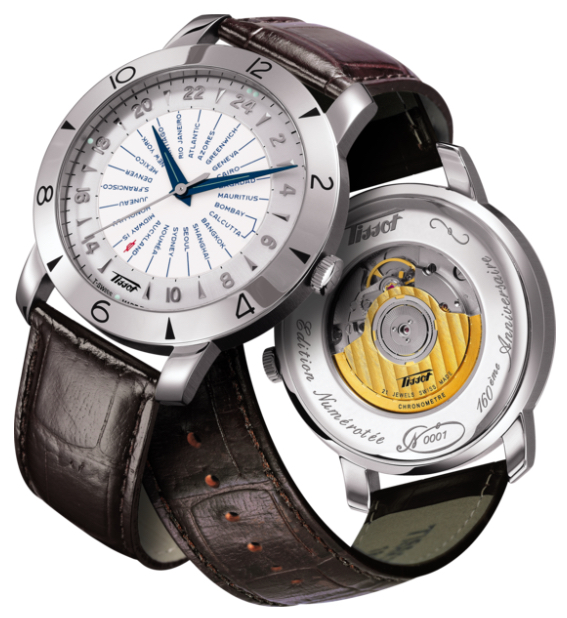
Watches are synonymous with Switzerland. And the Swiss non-profit/industry association COSC governs the standards. The Controle Officiel Suisse Des Chronometres (Whew!) is the only entity that certifies Swiss watches to have met the accuracy and consistency standards that earn the title “Chronometer.” A small percentage of all watches bear that mark, whether because they aren’t good enough or they simply haven’t been submitted for certification. Each timepiece that passes has its actual movement engraved with a number and gets an official certificate. That applies to both watches and clocks.
How good do they have to be? It’s complicated… but it appears to currently be to -4/+6 seconds on average per day for mechanical watches. Apparently, Japanese standards are slightly more rigorous (Grand Seiko being a brand that meets them). Quartz watches are significantly more accurate with a standard of less than 1 second of error per day.
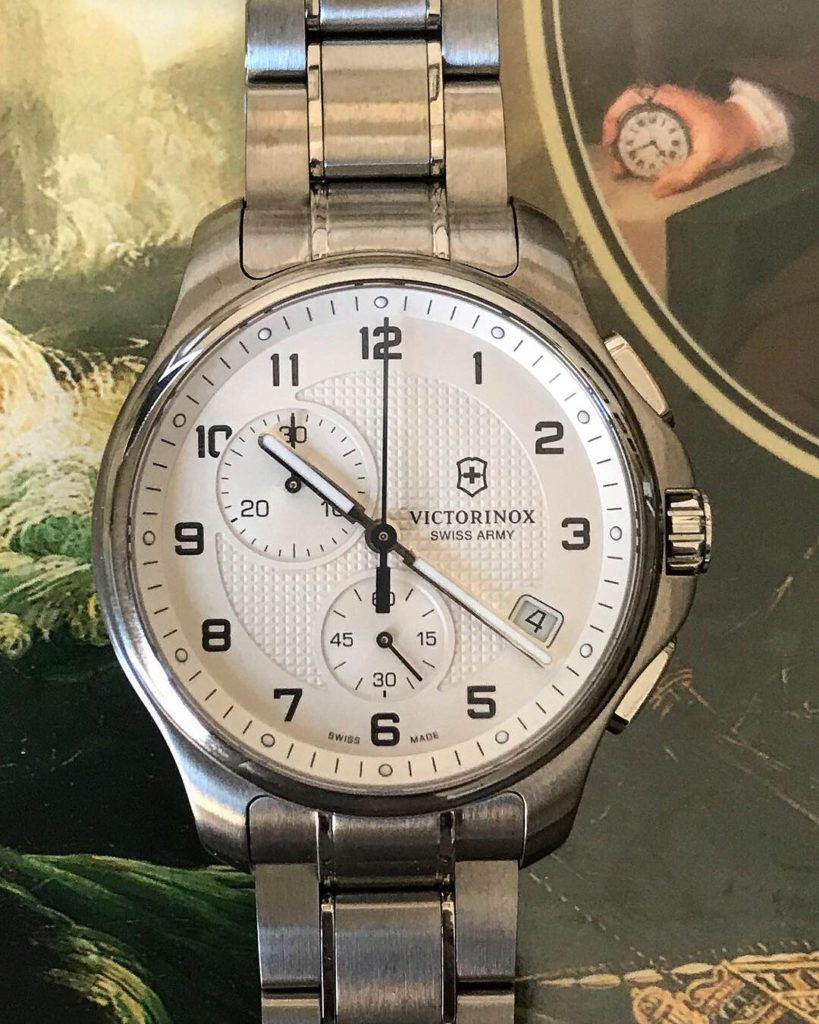
So, compared to today’s machine world, Harrison’s chronometer from 250 years ago was not only better than its time, but just better. His H1 through H4 pieces are still on display for the public to appreciate in Greenwich, England… also known as zero degrees Longitude.
Ed. note: Most of the Harrison and related references in this post were sourced from the book pictured above: Longitude: the True Story of a Lone Genius Who Solved the Greatest Scientific Problem of His Time. Author: Dava Sobel. We highly recommend this book, and especially the Illustrated version The Illustrated Longitude, with substantial illustration and captioning by co-author William J. H. Andrewes. Want the video version? There’s a Nova episode which is available on DVD!